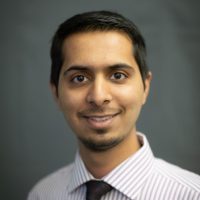Power Transfer Techniques for Biomedical Implants

Speaker: Usama Anwar
Affiliation: Ph.D. Candidate
Via Zoom: https://ucla.zoom.us/j/98590222440
Abstract: Biomedical implants are designed to last inside the human body for more than a decade. Critical to the longevity of the implants is how power is distributed inside the implant. The first part of the thesis explores how wired power is efficiently delivered inside a distributed implant.
Distributed implants involve multiple stages of power conversion, all of which introduce losses. Furthermore, the implants must be connected through leads, which involve extra surgeries and are inconvenient. For example, traditional lead-based cardiac pacemakers suffer from lead-related complications which include lead fracture, lead dislodgement, and venous obstruction. Modern leadless pacemakers mitigate the complications, but, since they are implanted inside the heart with a small battery, their limited battery lifetime necessitates device replacement. The second part of my thesis presents a leadless and batteryless, wirelessly powered intravenous cardiac pacemaker that mitigates both problems. The pacemaker is a passive wireless power receiver circuit that receives bursts of power from a transmitter and stimulates the tissue. The circuit applies monophasic, cathodic, and current/voltage stimulation to the heart with a programmable pulse period. In-vivo device functionality verification demonstrates the potential of the device to advance pacemaker technology.
The cardiac pacemaker has a very small form factor and is designed to be implanted in a vein, which is wirelessly powered by a subcutaneous module. The subcutaneous module includes a rechargeable battery and is powered once in a few months from an external module. The third part of my thesis presents a wireless power transfer system for power transfer between external and subcutaneous modules. Power is transmitted in bursts between the external transmitter and subcutaneous receiver modules. The duty cycle of the burst is controlled through load modulation to control power flow between the modules. The proposed WPT circuit can regulate output voltage against distance and load variations.
Biography: Usama Anwar received the B.S. degree in electrical engineering from the LUMS University, Pakistan, in 2014 and the M.S. degree in electrical engineering from the University of Colorado Boulder, USA, in 2016. Mr. Anwar is a recipient of Merit Scholarship from LUMS University from 2011 to 2014, the University of Colorado Boulder College of Engineering Fellowship Award in 2014, and Broadcom Foundation Fellowship from 2018-19.
For more information, contact Prof. Dejan Markovic (dejan@ucla.edu)
Date/Time:
Date(s) - Apr 07, 2021
9:00 am - 11:00 am
Location:
Via Zoom Only
No location, Los Angeles
Map Unavailable
